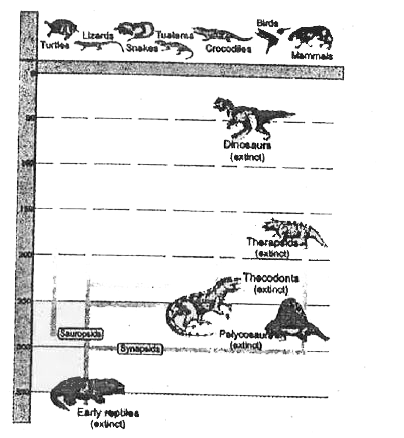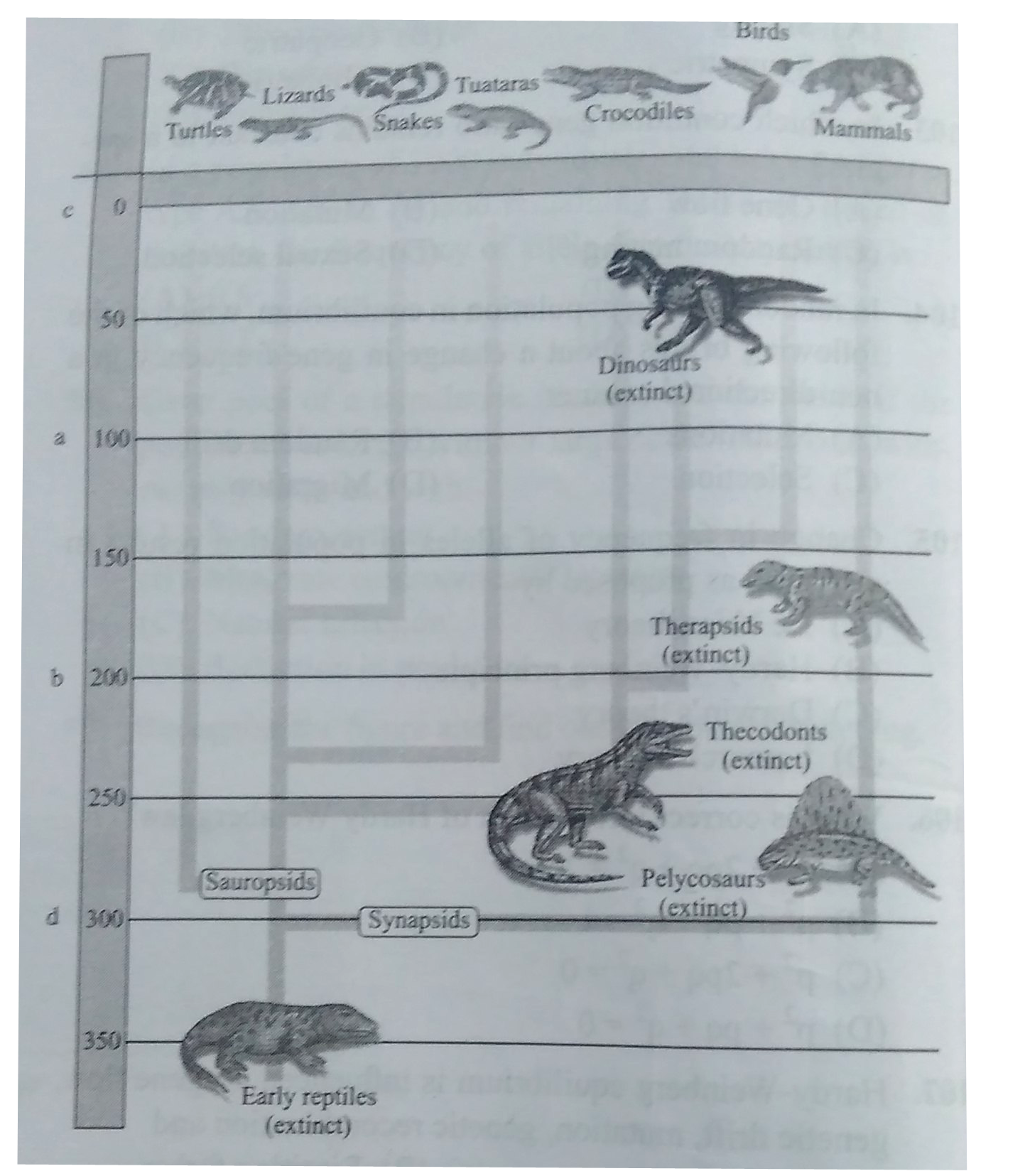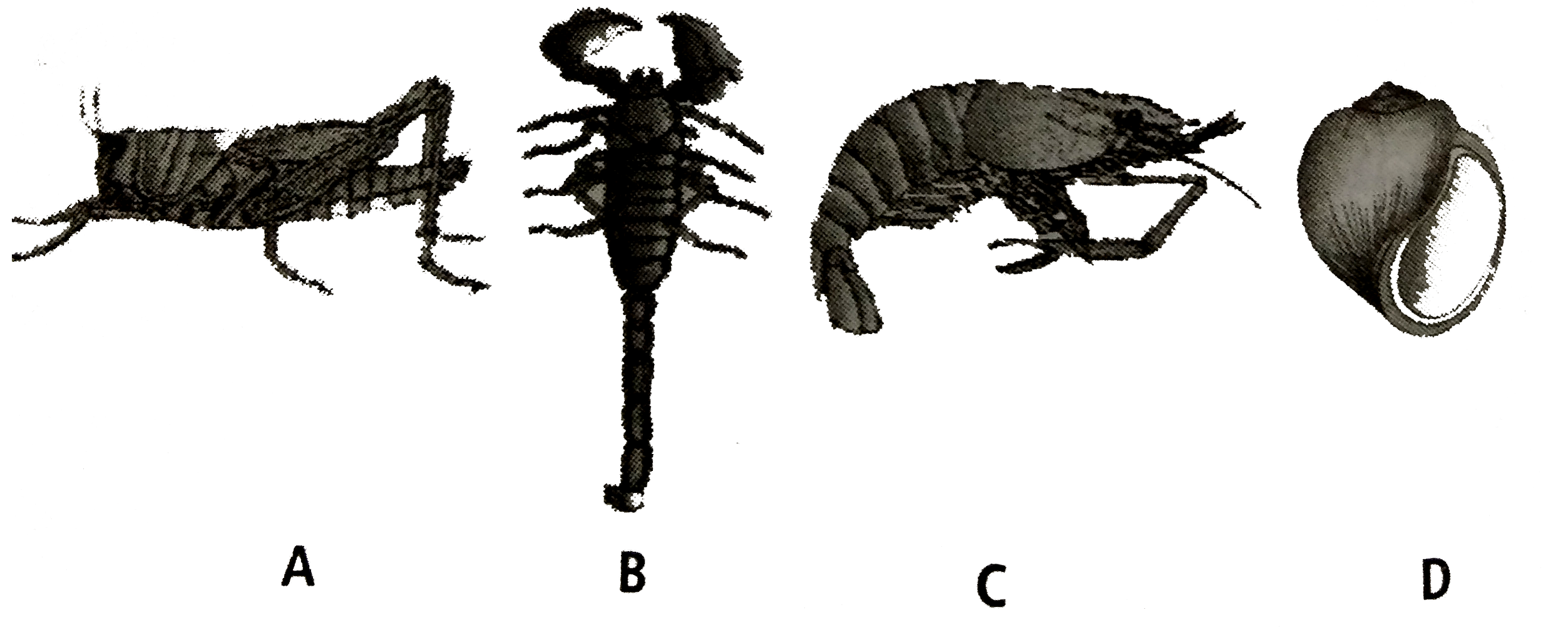Following is given the diagrammatic representation of evolutionary history of vertebrates through geological periods. Identify the geological periods (A, B, C and D) and select the correct option.

A
ABCDCarboneferous Triassic Creraceous Quaternary
B
ABCDJurassicPremainTertiaryCretaceous
C
ABCDPremianJurassicQuaternaryTertiary
D
ABCDCretaceousQuaternaryCarbonferousJurassic
Text Solution
The correct Answer is:A
|
Topper's Solved these Questions
- EVOLUTIONBOOK - AAKASH SERIESCHAPTER - EVOLUTIONEXERCISE - EXERCISE - I (EVOLUTION OF MAN)
27 Videos
- EVOLUTIONBOOK - AAKASH SERIESCHAPTER - EVOLUTIONEXERCISE - EXERCISE -II (ORIGIN OF LIFE AND EVOLUTION OF LIFE FORMS)
19 Videos
- EVOLUTIONBOOK - AAKASH SERIESCHAPTER - EVOLUTIONEXERCISE - EXERCISE - I (EVOLUTIONARY FORCES)
6 Videos
- DIGESTION AND ABSORPTIONBOOK - AAKASH SERIESCHAPTER - DIGESTION AND ABSORPTIONEXERCISE - Exercise - III (Previous AIPMT/NEET Questions)
24 Videos
- EXCRETORY PRODUCTS AND THEIR ELIMINATIONBOOK - AAKASH SERIESCHAPTER - EXCRETORY PRODUCTS AND THEIR ELIMINATIONEXERCISE - EXERCISE - III (PREVIOUS AIPMT/NEET QUESTIONS)
18 Videos
Similar Questions
Knowledge Check
Here is given the diagrammatic representation of evolutionary history of vertebrates through geological periods. Identify the geological periods (a, b, c and d) and select the correct option.
 Aa - Carboniferous, b - Triassic, c - Cretaceous, d - QuaternaryBa - Jurassic , b - Permian, c - Tertiary, d - CarboniferousCa - Permian, b - Jurassic, c - Quaternary, d - TertiaryDa - Cretaceous, b - Quanternary c - Carboniferous, d - Jurassic
Aa - Carboniferous, b - Triassic, c - Cretaceous, d - QuaternaryBa - Jurassic , b - Permian, c - Tertiary, d - CarboniferousCa - Permian, b - Jurassic, c - Quaternary, d - TertiaryDa - Cretaceous, b - Quanternary c - Carboniferous, d - JurassicIdentify the parts labelled a, b, c and d and select the correct option
 .Aa-scutellum, b-epiblast, c-coleoptile, d-coleorhizaBb-coleorhiza, c-coleoptile, d-epiblastCa-scutellum, b-coleoptile, c-coleorhiza, d-epiblastDa-epiblast, b-coleoptile, c-coleorhiza, d-scutellum.
.Aa-scutellum, b-epiblast, c-coleoptile, d-coleorhizaBb-coleorhiza, c-coleoptile, d-epiblastCa-scutellum, b-coleoptile, c-coleorhiza, d-epiblastDa-epiblast, b-coleoptile, c-coleorhiza, d-scutellum.Identify a,b,c and d of nephron and select the correct option
 Aa- glomerulus - a tuft of capillaries formed by afferent arterioleBb-PCT - reabsorption of HCO−3 and selective secretion of H+ and K+ occurs hereCc−DCT− almost all glucose, amino acids, water, K+ and uric acid are absorbed hereDd - collecting duct - extends from cortex to inner part of medulla, large amount of water is secreted in this region
Aa- glomerulus - a tuft of capillaries formed by afferent arterioleBb-PCT - reabsorption of HCO−3 and selective secretion of H+ and K+ occurs hereCc−DCT− almost all glucose, amino acids, water, K+ and uric acid are absorbed hereDd - collecting duct - extends from cortex to inner part of medulla, large amount of water is secreted in this region
In the given diagrammatic representation of operation of natural selection, identify a,b and c

View SolutionSee the given diagrammatic representation. Identify A,B,C and D

View SolutionIn the given representation of Calvin cycle, identify A, B and C and slect the correct option.

View SolutionIn the given representation of Calvin cycle, identify A, B and C and slect the correct option.

View SolutionSelect the correct chronological order of the following geological periods :
View Solution

